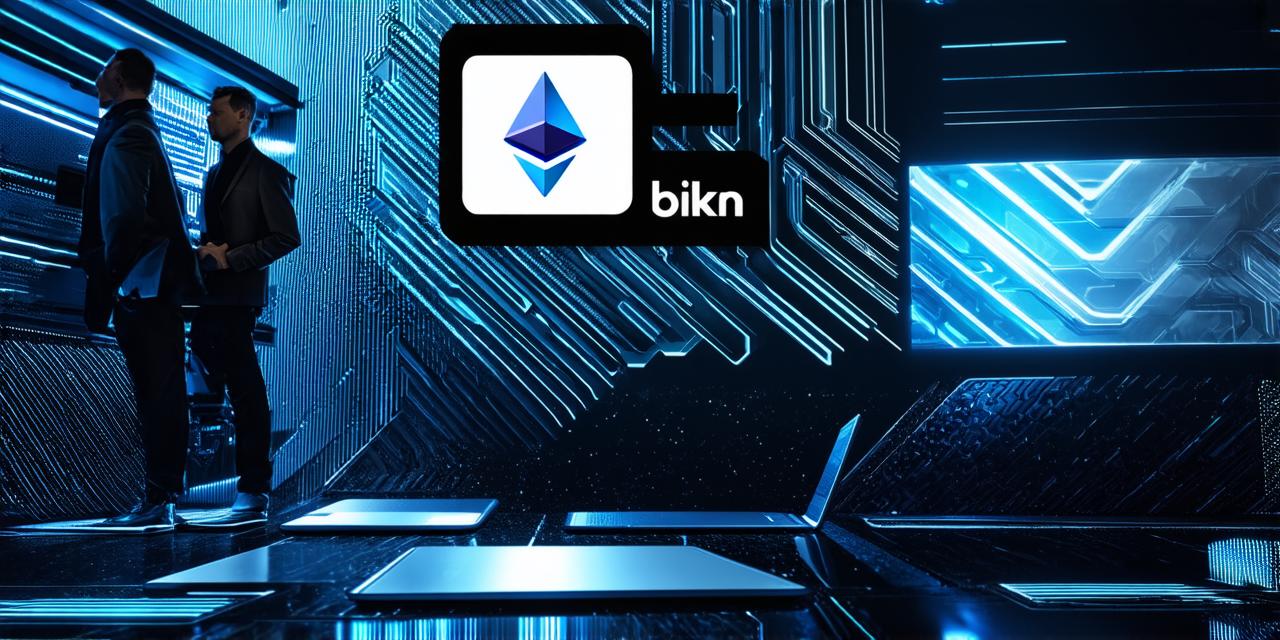When it comes to smart contracts, blockchain is the underlying technology that enables secure and transparent transactions without intermediaries. Smart contracts are self-executing programs that automatically enforce the terms of an agreement when certain conditions are met. In this article, we will explore different blockchains that are suitable for smart contracts, along with their features, advantages, and disadvantages.
Ethereum:
Ethereum is the most popular blockchain for smart contracts, accounting for over 90% of the total smart contract market share. It was designed specifically to support decentralized applications (dApps) that run on smart contracts. Ethereum’s programming language, Solidity, is similar to other programming languages like C++ and Java. One of the main advantages of Ethereum is its large developer community, which has created a vast library of tools and frameworks for building dApps.
EOS:
EOS is another popular blockchain for smart contracts, known for its fast transaction speeds and scalability. EOS claims to be able to process up to 1 million transactions per second, making it ideal for high-volume applications like supply chain management. EOS’s programming language, C++, is more advanced than Solidity, which makes it suitable for experienced developers. However, the downside of EOS is that it has not yet been fully adopted by the mainstream blockchain community.
Hyperledger Fabric:
Hyperledger Fabric is a private blockchain platform that is designed specifically for enterprise use cases. It offers features like confidentiality, privacy, and governance, making it an ideal choice for industries like finance and healthcare where data security is paramount. Hyperledger Fabric’s programming language, Go, is easy to learn and use, which makes it accessible to a wider range of developers. However, the downside of Hyperledger Fabric is that it is not suitable for decentralized applications that require transparency and immutability.
Tron:
Tron is a blockchain platform that aims to enable creators to publish and monetize their content on the web. It has its own programming language, called Solidity, which is similar to Ethereum’s. One of the main advantages of Tron is its low transaction fees, which makes it ideal for microtransactions. However, the downside of Tron is that it is not yet fully adopted by the mainstream blockchain community, and it has limited developer resources available compared to Ethereum and EOS.
Cardano:
Cardano is a blockchain platform that claims to be more secure and scalable than other blockchains. It was designed specifically for enterprise use cases, with a focus on interoperability and compliance. Cardano’s programming language, Haskell, is known for its strong typing and pure functions, which make it suitable for complex applications. One of the main advantages of Cardano is its low energy consumption compared to other blockchains, which makes it more eco-friendly. However, the downside of Cardano is that it is not yet fully adopted by the mainstream blockchain community, and it has limited developer resources available compared to Ethereum and EOS.
Comparing the Features and Advantages of Different Blockchains for Smart Contracts
When selecting a blockchain for smart contracts, there are several factors to consider, including security, scalability, transaction speed, programming language, and developer community support. Here is a comparison of the features and advantages of the five most popular blockchains for smart contracts:
Ethereum:
Security: Ethereum’s consensus mechanism, Proof of Work (PoW), is secure and resistant to attacks. However, it requires a significant amount of energy to mine new blocks.
Scalability: Ethereum’s scalability has been an issue in the past, but recent updates like Ethereum 2.0 aim to improve this.
Transaction speed: Ethereum’s transaction speed can vary depending on network congestion and gas fees. However, it is generally slower than other blockchains like EOS and Tron.
Programming language: Solidity is a popular programming language among developers. It is similar to other programming languages like C++ and Java.
Developer community support: Ethereum has a large developer community, which has created a vast library of tools and frameworks for building dApps.
EOS:
Security: EOS’s consensus mechanism, Delegated Proof of Stake (DPoS), is secure and efficient. It requires significantly less energy than PoW and allows for faster transaction speeds.
Scalability: EOS has a high scalability and can process up to 1 million transactions per second.
Transaction speed: EOS’s transaction speed is much faster than Ethereum’s, making it ideal for high-volume applications like supply chain management.
Programming language: C++ is a more advanced programming language than Solidity, which makes it suitable for experienced developers.
Developer community support: EOS has not yet been fully adopted by the mainstream blockchain community, but its developer resources are growing rapidly.
Hyperledger Fabric:
Security: Hyperledger Fabric’s consensus mechanism, Distributed Ledger Technology (DLT), is secure and designed for enterprise use cases. It offers features like confidentiality, privacy, and governance, making it an ideal choice for industries like finance and healthcare.
Scalability: Hyperledger Fabric has limited scalability compared to other blockchains, but it is suitable for small to medium-sized enterprises.
Transaction speed: Hyperledger Fabric’s transaction speed can vary depending on network congestion, but it is generally slower than other blockchains like EOS and Tron.
Programming language: Go is an easy-to-learn programming language that is suitable for a wider range of developers.
Developer community support: Hyperledger Fabric has limited developer resources available compared to Ethereum and EOS, but it is supported by the open-source community.
Tron:
Security: Tron’s consensus mechanism, Delegated Proof of Stake (DPoS), is secure and efficient. It requires significantly less energy than PoW and allows for faster transaction speeds.
Scalability: Tron has limited scalability compared to other blockchains, but it is suitable for small-scale applications.
Transaction speed: Tron’s transaction speed is much faster than Ethereum’s, making it ideal for microtransactions.
Programming language: Solidity is a popular programming language among developers. It is similar to Ethereum’s.
Developer community support: Tron has limited developer resources available compared to Ethereum and EOS, but it is supported by the open-source community.
Cardano:
Security: Cardano’s consensus mechanism, Ouroboros Proof of Stake (PoS), is secure and designed for enterprise use cases. It is more resistant to attacks than other PoW-based blockchains.
Scalability: Cardano has limited scalability compared to other blockchains, but it is suitable for small to medium-sized enterprises.
Transaction speed: Cardano’s transaction speed can vary depending on network congestion and gas fees, but it is generally slower than other blockchains like EOS and Tron.

Programming language: Haskell is a strong-typed programming language that is suitable for complex applications. It has a small developer community.
Developer community support: Cardano has limited developer resources available compared to Ethereum and EOS, but it is supported by the open-source community.
Conclusion:
In conclusion, when selecting a blockchain for smart contracts, it is essential to consider factors such as security, scalability, transaction speed, programming language, and developer community support. Each of the five most popular blockchains has its advantages and disadvantages, making them suitable for different use cases.
